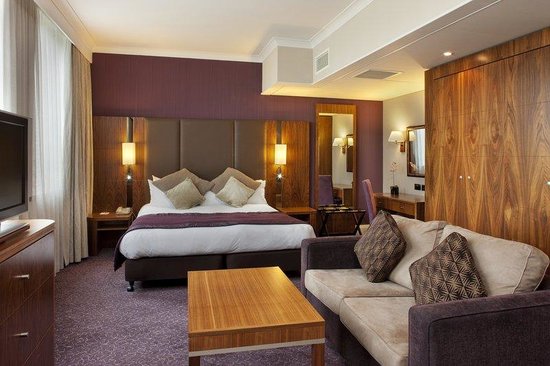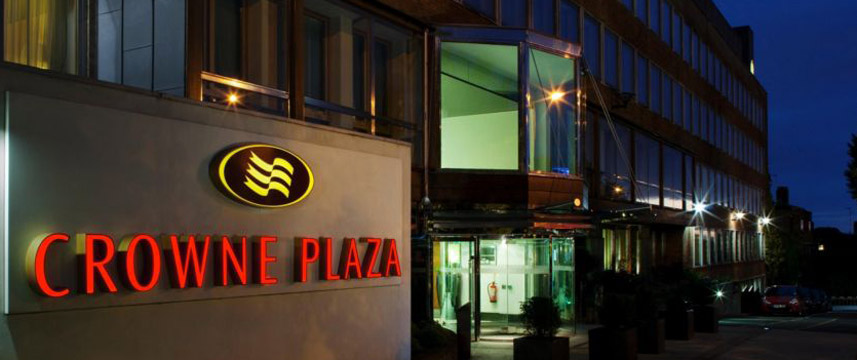Venue & Hospitality
Welcome to the Official Attendee Housing Site for 2nd Global Summit and Expo on Multimedia & Applications which will be held in the beautiful city of London, UK.
Crowne Plaza Heathrow LondonStockley Rd, Drayton,
London UB7 9NA,
United Kingdom
Conference Dates: August 15-16, 2016
Hotel Services & Amenities
- Audio/Visual Equipment Rental.
- Business Center.
- Business Phone Service.
- Complimentary Printing Service.
- Express Mail.
- Fax.
- Meeting Rooms.
- Office Rental.
- Photo Copying Service.
- Secretarial Service.
- Telex.
- Typewriter.
- Video Conference.
- Video Messaging.
- Video Phone.
- ATM.
- Baggage Storage.



Transportation
Driving Directions to
London City Airport
Hartmann Rd, London E16 2PX, United Kingdom
· Get on Aspen Way/A1261 from Hartmann Rd, A1020 and Lower Lea Crossing-2.7 mi / 8 min
1. Head north toward Hartmann Rd-499 ft
2. Turn right onto Hartmann Rd -0.3 miles
3. Turn right onto Connaught Rd/A112-358 ft
4. At the roundabout, take the 1st exit and stay on Connaught Rd/A112-449 ft
5. At the roundabout, take the 1st exit onto Connaught Bridge/A1020-0.1 miles
6. At the roundabout, take the 3rd exit onto N Woolwich Rd/A1020-1.1 miles
7. Take the ramp to Isle of Dogs/Blackwall Tnl/A102/A13-0.2 miles
8. At the roundabout, take the 2nd exit onto Lower Lea Crossing/A1020-0.6 miles
9. At the roundabout, take the 2nd exit onto the Aspen Way/A1261 ramp to The City/A13/Canary Wharf/Isle of Dogs-0.2 miles
· Take A1203 to Tower Hill/A100-3.4 miles / 8 min
10. Merge onto Aspen Way/A1261-0.8 miles
11. Keep right to continue on Limehouse Link/A1203-2.6 miles
12. Continue onto Tower Hill/A100-217 ft
· Take A3211 and A4201 to Marylebone Rd/A501-4.1 mi / 15 min
13. Turn left to stay on Tower Hill/A100-0.3 miles
14. Continue onto Lower Thames St/A3211
· Continue to follow A3211-1.0 miles
15. Continue straight onto Blackfriars Underpass/A3211
· Continue to follow A3211-1.0 miles
16. Turn right onto Northumberland Ave/A400-0.2 miles
17. At the roundabout, take the 3rd exit onto Trafalgar Square/A4
· Continue to follow A4
· Leaving toll zone in 0.2 mi at Pall Mall-0.2 miles
18. Turn right onto Waterloo Pl-427 ft
19. Continue onto Regent St
· Entering toll zone-0.1 miles
20. Slight left onto Regent St/A4201
Continue to follow A4201
Leaving toll zone in 0.7 miles
Entering toll zone in 0.8 mi-1.1 miles
21. Turn left onto Park Cres/A4201-446 ft
· Follow A40 and A312 to N Hyde Rd in Hounslow-14.2 mi / 25 min
22. Take the 1st left onto Marylebone Rd/A501
Leaving toll zone-0.9 miles
23. Continue onto Marylebone Flyover/A40
Continue to follow A40-9.6 miles
24. Take the A312 ramp to Heathrow/Airport/Hayes/Southall/Yeading-0.2 miles
25. At the roundabout, take the 1st exit onto Church Rd/A312-0.7 miles
26. At the roundabout, take the 2nd exit onto The Pkwy/A312-0.7 miles
27. At the roundabout, take the 2nd exit and stay on The Pkwy/A312-2.1 miles
· Continue on N Hyde Rd to your destination in West Drayton-2.7 mi / 8 min
28. At the roundabout, take the 3rd exit onto N Hyde Rd -0.8 miles
29. Turn left onto Station Rd/A437 -0.3 miles
30. Turn right onto Station Rd -0.1 miles
31. At the roundabout, take the 1st exit onto Shepiston Ln -1.1 miles
32. At the roundabout, take the 5th exit onto Stockley Rd/A408 -0.2 miles
33. Keep left -0.1 miles
34. Turn left
Destination will be on the left-272 ft
Orwells Brasserie
Stockley Road Lake, West Drayton UB7 9NA, United Kingdom
Route Map
About City
London was founded as a communication center by the Romans shortly after they invaded Britain in 43 AD. Londinium, as it was called then, was a little village on the Thames., on the route to the provincial capital in eastern England. The Romans built a bridge across Thames on that route, the first bridge on the Thames near the little village. London had narrow, congested streets lined with tiny shops and houses built of wood and plaster back then. Even the London Bridge, which was considerably more than just a river crossing, had this tendency of narrow, crowded spaces. Therefore, a new stone bridge was built in 1176 to replace the old one. It also became a cultural center, the center of the English cultural Renaissance, with major figures as Christopher Marlowe, Ben Jonson, and William Shakespeare. London was Britain's economic powerhouse and the center of a burgeoning empire.
The Houses of Parliament also called the Palace of Westminster, range along the Thames with Victoria Tower at one end and Big Ben, the famous bell in the Clock Tower, at the other. Westminster Abbey, built in Gothic style, has been the scene of the coronation of sovereigns from William the Conqueror to Elizabeth II. Buckingham Palace was made the official residence of the Sovereign by Queen Victoria. The Royal Guards change at 11.30 every day much to the delight of the tourists. Sir Christopher Wren's baroque masterpiece known as St. Paul's Cathedral was built after the Great Fire in 1066. The Duke of Wellington, Wren himself and Nelson are buried here. Lord Nelson's statue dominates Trafalgar Square, a big square in the center of London named in commemoration of a great English naval victory. People and especially pigeons gather here to see the fountains, the big lions and the statue of the victorious Admiral. The National Gallery, situated on the north side of Trafalgar Square, houses one of the richest collection of paintings, most Renaissance and Impressionist works. Madame Tussaud's exhibits wax models instead, models of famous historical characters, film and sports starts, Royalty statesmen. A more conventional museum is the British Museum, which shows the works of man from prehistoric times to the present day. There are permanent displays of antiquities from Egypt, Western Asia, Greece and Rome. It also includes one of the most famous libraries in the world. But there isn't much excitement in the British Museum, for fun and entertainment one could always go to the Barbican Arts Center, a good example of modern architecture. And after the sunset, there are dozens of theatres just a few minutes’ walk from Piccadilly Circus (West End theatres), and so is the world famous Covent Garden, home of the Royal Opera. For those who like discos and nightclubs, they can find them near Leicester Square, open till late.
The conclusion remains the same. London is a perfect binding of the past and the present, a city with so many places to visit that one couldn't find the time to view them all. Samuel Johnson was right when he said that when someone is tired of London he is tired of life. London was founded as a communication center by the Romans shortly after they invaded Britain in 43 AD. Londinium, as it was called then, was a little village on the Thames., on the route to the provincial capital in eastern England. The Romans built a bridge across Thames on that route, the first bridge on the Thames near the little village. London had narrow, congested streets lined with tiny shops and houses built of wood and plaster back then. Even the London Bridge, which was considerably more than just a river crossing, had this tendency of narrow, crowded spaces. Therefore, a new stone bridge was built in 1176 to replace the old one. It also became a cultural center, the center of the English cultural Renaissance, with major figures as Christopher Marlowe, Ben Jonson, and William Shakespeare. London was Britain's economic powerhouse and the center of a burgeoning empire.
The Houses of Parliament also called the Palace of Westminster, range along the Thames with Victoria Tower at one end and Big Ben, the famous bell in the Clock Tower, at the other. Westminster Abbey, built in Gothic style, has been the scene of the coronation of sovereigns from William the Conqueror to Elizabeth II. Buckingham Palace was made the official residence of the Sovereign by Queen Victoria. The Royal Guards change at 11.30 every day much to the delight of the tourists. Sir Christopher Wren's baroque masterpiece known as St. Paul's Cathedral was built after the Great Fire in 1066. The Duke of Wellington, Wren himself and Nelson are buried here. Lord Nelson's statue dominates Trafalgar Square, a big square in the center of London named in commemoration of a great English naval victory. People and especially pigeons gather here to see the fountains, the big lions and the statue of the victorious Admiral. The National Gallery, situated on the north side of Trafalgar Square, houses one of the richest collection of paintings, most Renaissance and Impressionist works. Madame Tussaud's exhibits wax models instead, models of famous historical characters, film and sports starts, Royalty statesmen. A more conventional museum is the British Museum, which shows the works of man from prehistoric times to the present day. There are permanent displays of antiquities from Egypt, Western Asia, Greece and Rome. It also includes one of the most famous libraries in the world. But there isn't much excitement in the British Museum, for fun and entertainment one could always go to the Barbican Arts Center, a good example of modern architecture. And after the sunset, there are dozens of theatres just a few minutes’ walk from Piccadilly Circus (West End theatres), and so is the world famous Covent Garden, home of the Royal Opera. For those who like discos and nightclubs, they can find them near Leicester Square, open till late.
The conclusion remains the same. London is a perfect binding of the past and the present, a city with so many places to visit that one couldn't find the time to view them all. Samuel Johnson was right when he said that when someone is tired of London he is tired of life.

